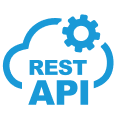Top Laravel Interview Questions and Answers
Are you a Laravel developer or a recruiter searching for a Laravel developer? You are at the right place. We've included some of the most commonly asked Laravel interview questions to help you feel confident going into interviews or spotting top talent when hiring.

Basic Laravel Interview Questions for Freshers
Laravel is a PHP web framework. We can use it to build web applications easily and efficiently.
Laravel stands out because of its elegant syntax, built-in features like Eloquent ORM, Blade templating, powerful routing, and an easy-to-use ecosystem that speeds up development while maintaining clean, readable code. Moreover, Laravel gets regular updates and has a strong community that supports developers along the way.
The MVC model refers to the part that connects to the data and database logic. The view refers to the user interface. The controller is the link between the Model and View, and also controls user input.
Laravel uses the MVC architecture, separating application logic (the controller), data (model), and UI (view) to help keep code organized and clean.
Composer is a PHP dependency manager. Laravel uses Composer to install and manage packages, including Laravel itself and third-party libraries.
Artisan is Laravel’s command-line. We can use this tool to automate tasks like creating files, running migrations, and clearing the cache.
Laravel's templating engine is known as Blade templates. These are simple and powerful. They help us to develop dynamic HTML views with easy syntax.
In Laravel, we can direct the user requests to particular controllers or actions. This is known as routing. We can define it in routes/web.php using simple URL patterns and functions.
Eloquent ORM is Laravel’s built-in tool that helps to work with databases using simple, readable PHP code instead of raw SQL.
Laravel does migrations to help us manage database changes using code. Migrations help us to maintain a consistent database structure, and we can update the database easily.
To stop unauthorized commands from other sites, we can use CSRF protection. Laravel handles it by using CSRF tokens in forms to verify that requests are genuine.
To store environment settings like database info and app keys, we can use the .env file, which keeps data secure and separate from code.
In Laravel, service providers are the central place to configure and bootstrap your application’s services. They register bindings in the service container, set up event listeners, middleware, routes, and more. Essentially, they tell Laravel how to prepare and load different parts of your app during startup.
The php artisan serve command starts a local development server for your Laravel app, allowing you to access it in your browser without setting up a full web server like Apache or Nginx.
Laravel projects are typically structured with:
- app/ — core app code (Models, Controllers, Middleware)
- routes/ — route definitions
- resources/ — views (Blade), assets (CSS, JS)
- database/ — migrations, seeders
- config/ — configuration files
- public/ — web entry point and public assets
This organization keeps code clean and maintainable.

Intermediate Laravel Interview Questions
With built-in features for login, registration, and password reset, Laravel handles authentication. To handle authorization, Laravel uses gates and policies that control user access to resources.
Laravel facades are shortcuts to access services in the container. They provide a simple, static-like interface to classes behind the scenes.
The Form Request class in Laravel is used to handle and validate incoming form data cleanly, keeping validation logic separate from controllers.
Laravel handles validation using built-in rules in controllers or Form Request classes to check and validate user input easily.
hasOne means a model owns one related model. belongsTo means a model is owned by another model.
In Laravel, you use queues to delay tasks like emails. Define a job, push it to a queue, and run a worker to process it in the background.
Laravel Mix is a tool to compile and minify assets like CSS and JS. It's used with simple commands to manage front-end files easily.
We schedule tasks in Laravel using the scheduler in app/Console/Kernel.php, then run php artisan schedule:run in a cron job.
The boot method in Laravel models is used to hook into model events like creating, updating, or deleting to run custom logic.
Laravel supports localization using language files stored in the resources/lang folder to easily switch between multiple languages.
To implement soft deletes in Laravel, do the following.
- Use the SoftDeletes trait in your model.
- Add a deleted_at column to your database table (usually via a migration).
- When you delete a record, it’s not removed but marked with a timestamp in deleted_at.
This way, soft-deleted records are excluded from queries but can be restored later.
In Blade templates,
- @include inserts a separate Blade file’s content into the current view (like a reusable snippet).
- @extends sets a parent layout that the current view builds upon, using @section to fill in parts of the layout.
layout.blade.php
home.blade.php
footer.blade.php
In this example,
@extends tells home.blade.php to use layout.blade.php as the base.
@include inserts the footer inside the content section.
Laravel handles file uploads by using the Request object to access uploaded files, then storing them with built-in methods like store() or move() to save files securely in the filesystem or cloud storage. Validation can be applied to check the file type and size before saving.
Yes! Laravel can be used for full-stack development. It handles backend logic, APIs, and also supports frontend with Blade templates, Vue.js integration, and tools like Laravel Mix for asset compilation.
Advanced Laravel Interview Questions for Experienced Professionals
Laravel’s service container manages class dependencies and injects them automatically where needed. Dependency injection means passing required objects into a class instead of creating them inside.
Laravel contracts are interfaces that define core services. They let you write flexible code by relying on these interfaces instead of concrete classes.
Create custom middleware with php artisan make:middleware, add your logic, then register it in Kernel.php and apply it to routes.
We can use Laravel Echo with broadcasting drivers like Pusher to send real-time events from the server to the client.
Laravel Horizon is a dashboard to monitor and manage queues easily, showing job status, failures, and performance.
We can optimize Laravel applications by caching config and routes, using eager loading, optimizing queries, and using queues for slow tasks.
Polymorphic relationships let a model belong to more than one other model type using a single relationship. For example, you want users to comment on both blog posts and videos. Instead of creating separate comment systems for each, Laravel lets you use one comments table for both. This is where polymorphic relationships come in.
Laravel limits API requests using the throttle middleware to control how many requests a user can make in a time period.
Laravel Passport is a full OAuth2 server for API authentication. Laravel Sanctum is simpler, mainly for token-based authentication mainly for SPAs and mobile apps.
To secure a Laravel application, follow the best practices below.
- Use strong passwords and hashing
- Enable CSRF protection
- Keep dependencies updated
- Use HTTPS
- Validate and sanitize inputs
- Limit user permissions and access
- To create a custom Artisan command in Laravel, run the following command.
- Now, define the command’s signature and logic in app/Console/Commands/MyCommand.php.
- Finally, register the command in app/Console/Kernel.php.
Example:
Run with:
How does this work?
- The php artisan make:command MyCommand creates a new command class in app/Console/Commands.
- The $signature property sets the command name (say:hello). The handle() method contains the code to run when the command is executed.
- In app/Console/Kernel.php, Laravel loads your command so it knows it exists and can be run.
- When you type php artisan say:hello in the terminal, Laravel finds your command by its signature and runs the handle() method, outputting “Hello, Laravel!” to the console.
So, it’s a way to add your own custom CLI tools inside Laravel!
hasManyThrough: Links a model to a distant related model through an intermediate model (e.g., Country → Posts through Users).
morphMany: Defines a polymorphic one-to-many relationship where a model can belong to more than one other model type (e.g., Comments on Posts or Videos).
To implement real-time notifications in Laravel, follow these steps.
- Use Laravel Notifications to create notification classes.
- Set up broadcasting with a driver like Pusher or Laravel Websockets.
- Send notifications with the ->notify() method and broadcast them.
- Listen for events on the frontend using JavaScript (e.g., Laravel Echo).
This lets users receive updates instantly without refreshing the page.
To implement caching in Laravel:
1- Choose a cache driver (like file, Redis, or Memcached) in
2- Use Laravel’s Cache facade to store and retrieve data:
3- Use tags or remember methods for more advanced caching control.
Its syntax is elegant, it has powerful tools, but debugging becomes tricky if we are not familiar with its internals.
Hire Top Caliber Laravel Developers
Quickly hire expert Laravel developers. WAC helps you find vetted talent in 48 hours to supercharge your development efforts.
Discover more interview questions
Hire Software Developers
Get top pre-vetted software developers and scale your team in just 48 hours.
Hire Developers Now
Insights


Blog12 mins read
Ecommerce Digital Marketing in 2026: Actionable Strategies & Tips



